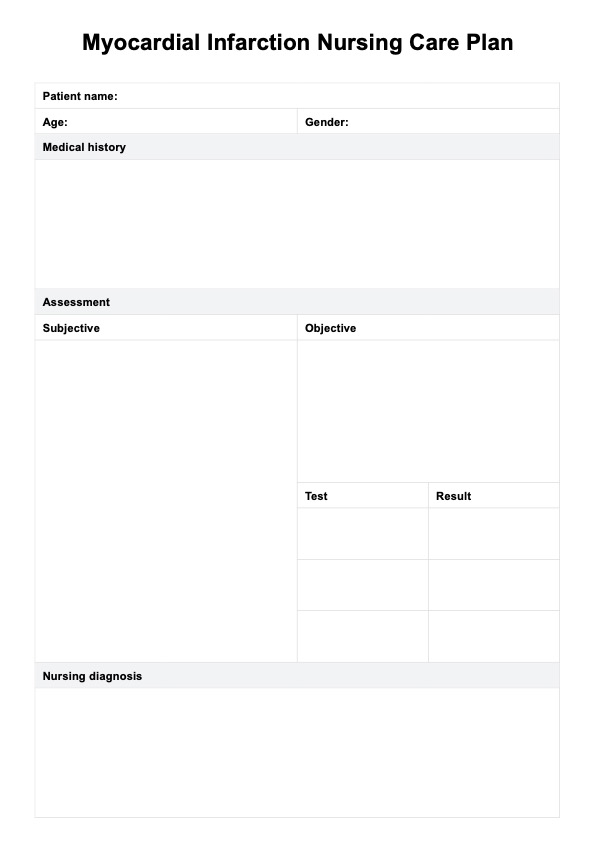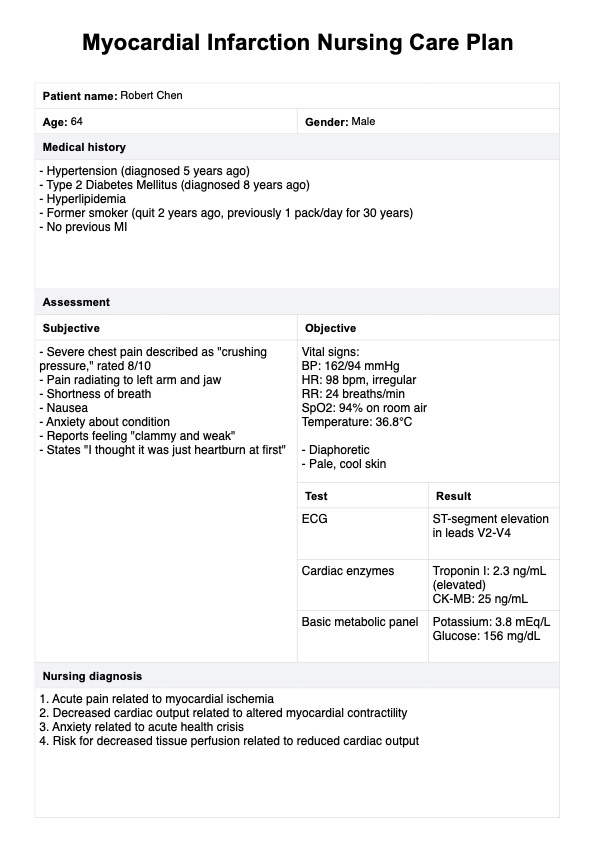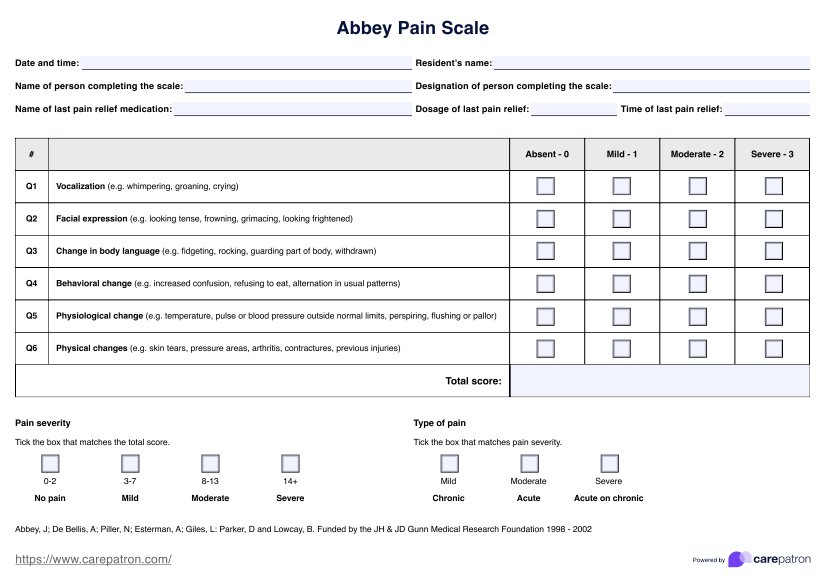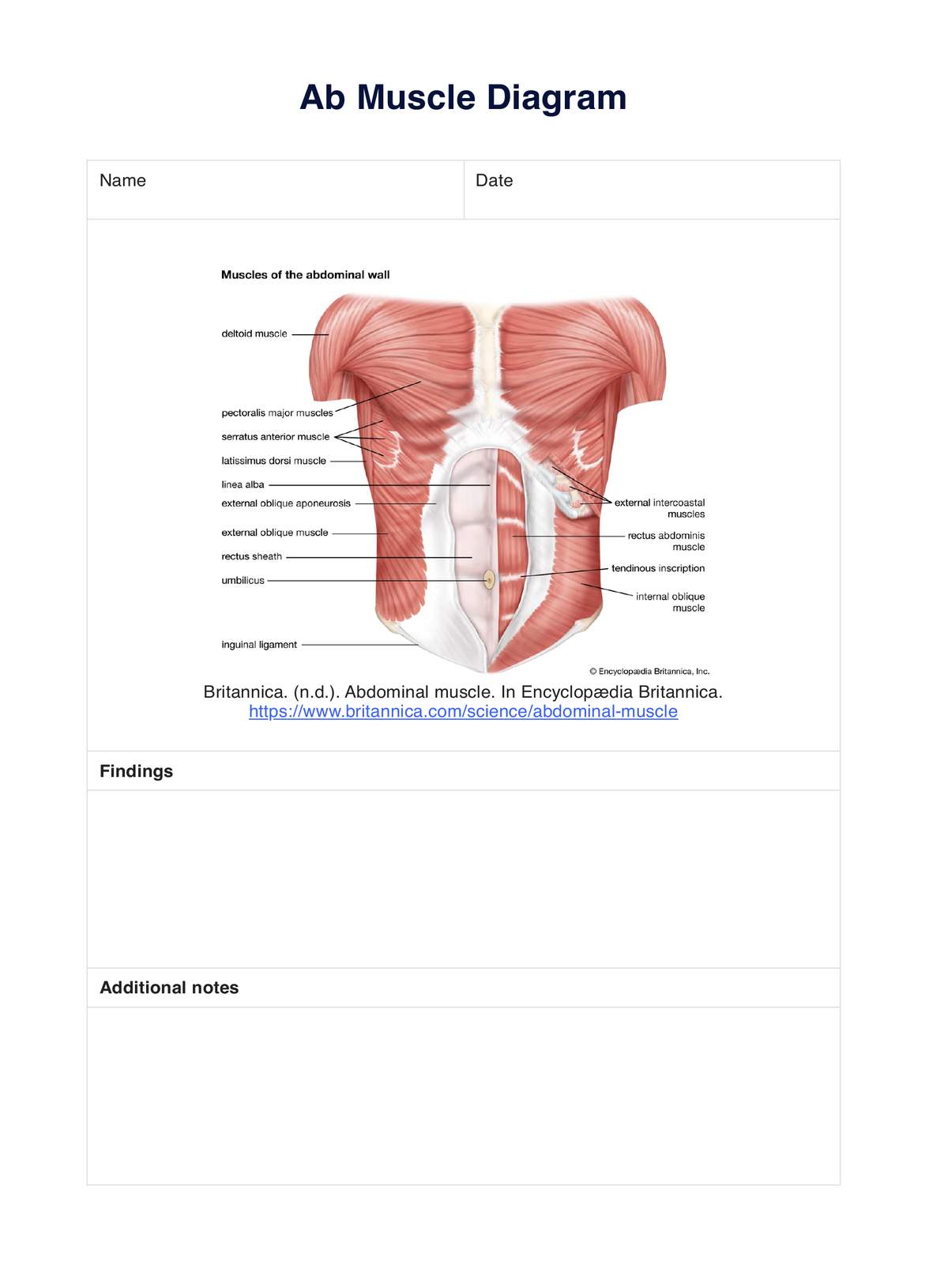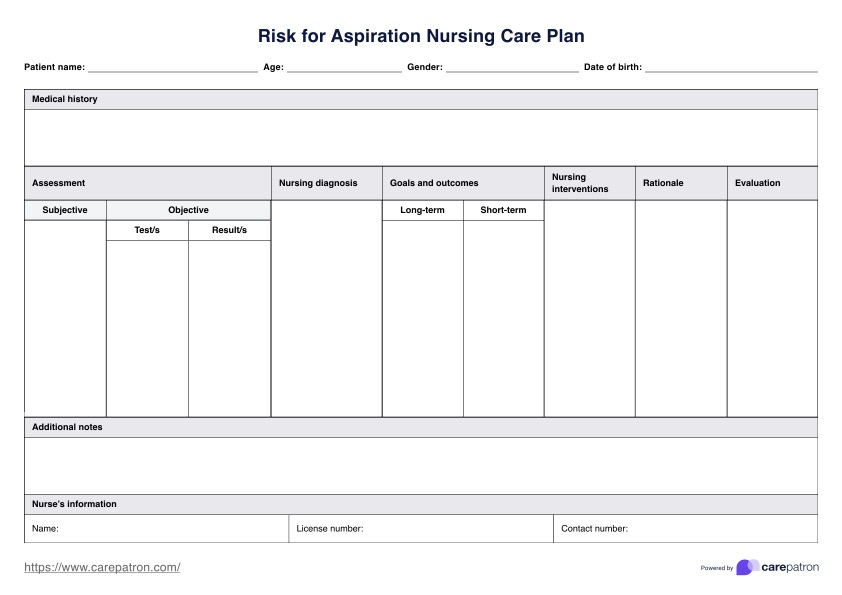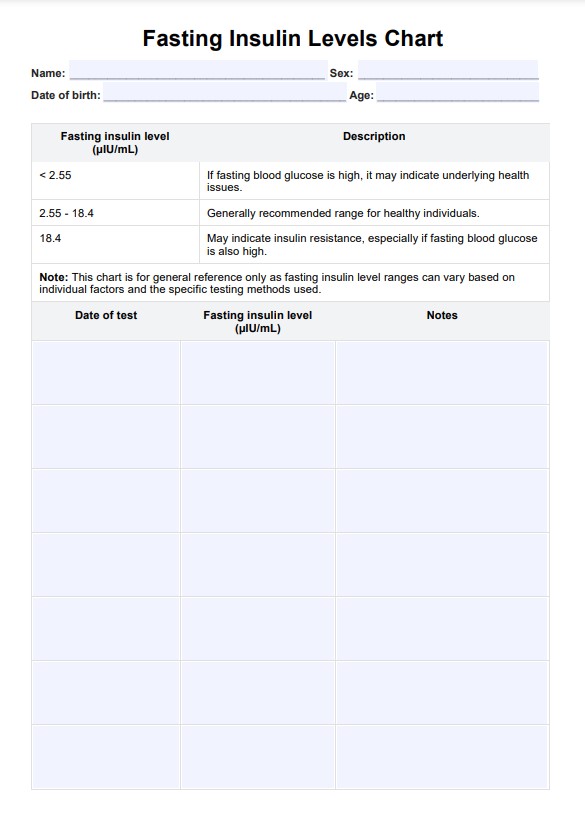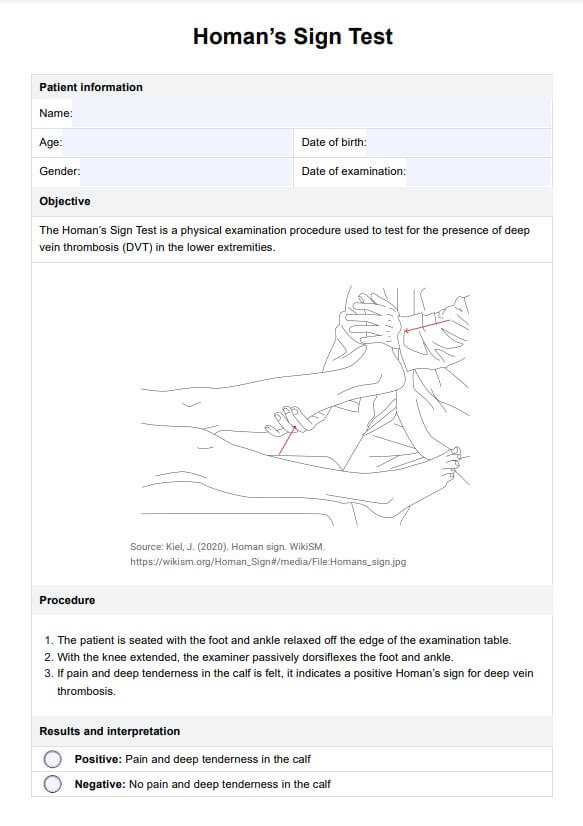Myocardial Infarction Nursing Care Plan
Use our Myocardial Infarction Nursing Care Plan Template to assess and create interventions for patients who experienced a myocardial infarction.


What is a Myocardial Infarction Nursing Care Plan Template?
A Myocardial Infarction Nursing Care Plan Template is a structured document designed to guide healthcare practitioners in providing comprehensive care for patients who have experienced a myocardial infarction (MI), commonly known as a heart attack. This template serves as a systematic approach to assessing, diagnosing, planning, implementing, and evaluating nursing care for patients with acute myocardial infarction (AMI), which typically occurs due to coronary artery occlusion.
The template typically includes sections for patient information, medical history, assessment findings, nursing diagnoses, goals, interventions, and evaluation criteria. It encompasses various aspects of care, including monitoring vital signs, managing chest pain, assessing the extent of damage to the cardiac muscle, administering medications, and providing patient education on risk factors and lifestyle modifications.
Myocardial Infarction Nursing Care Plan Template
Myocardial Infarction Nursing Care Plan Example
How does this myocardial infarction care plan template work?
Here's a step-by-step guide for practitioners on how to use this tool in their practice:
Step 1: Patient assessment
Complete the patient information, medical history, and assessment sections. Record subjective and objective data, including symptoms like chest pain and diagnostic test results such as cardiac enzymes and ECG findings.
Step 2: Diagnosis and planning
Formulate nursing diagnoses based on the assessment data. Set short-term and long-term goals for the patient's care, focusing on improving cardiac function and preventing complications.
Step 3: Intervention implementation
Document specific nursing interventions and their rationales. These may include administering medications, monitoring blood pressure, providing oxygen, and implementing strategies for pain relief and stress management.
Step 4: Evaluation
Assess the patient's progress toward the established goals regularly. Update the care plan as needed based on the patient's response to interventions and changes in condition.
When would you use this template?
The Myocardial Infarction Nursing Care Plan Template is a versatile tool used at various stages of patient care. Understanding when to use this template is crucial for maximizing its benefits and ensuring optimal patient outcomes. This nursing care plan can be used in several scenarios:
Upon hospital admission
When a patient is first admitted with a diagnosis of acute myocardial infarction or acute coronary syndrome, the template serves as a crucial starting point. It guides the initial assessment, helping healthcare providers quickly gather essential information about the patient's condition, symptoms, and medical history.
During the acute phase in critical care units
The template is helpful in managing the acute phase of myocardial infarction in the coronary care unit or intensive care unit. It provides a framework for continuously monitoring the patient's condition, including vital signs, cardiac enzymes, and electrocardiogram changes. The structured format allows for quick updates and easy communication among the healthcare team, ensuring all members are aligned on the patient's status and treatment plan.
Throughout hospital stay and post-intervention care
The template adapts to changing care needs as the patient progresses through their hospital stay. It's particularly useful after procedures like cardiac catheterization or percutaneous coronary intervention, providing a structured approach to post-procedure care and monitoring.
Planning for discharge and cardiac rehabilitation
As the patient prepares for discharge, the template shifts focus to support the transition from hospital to home care. It guides the development of a comprehensive discharge plan, which can include medication management, lifestyle modifications, and follow-up appointments.
Ongoing management of cardiac patients
For patients with a history of MI or coronary artery disease, the template continues to be valuable in outpatient settings. It supports long-term management by providing a framework for regular assessments, risk factors monitoring, and treatment plan adjustments.
Benefits of using this template
The Myocardial Infarction Nursing Care Plan Template offers numerous advantages for healthcare practitioners, patients, and healthcare systems alike. The following are some of the benefits of using this template:
Standardized care
The use of a standardized template ensures that all patients with myocardial infarction receive consistent, evidence-based care. This standardization is crucial in reducing practice variability, which can lead to improved patient outcomes. By providing a clear framework for assessment, diagnosis, and intervention, the template helps healthcare providers adhere to best practices and clinical guidelines.
Comprehensive assessment
One of the template's primary strengths is its ability to guide a thorough evaluation of the patient's condition. With comprehensive fields and sections, this prompts healthcare providers to assess all subjective and objective aspects of myocardial infarction, including coronary blood flow, myocardial ischemia, and potential complications such as heart failure or atrial fibrillation. This comprehensive approach ensures no critical elements are missed during the assessment phase.
Targeted interventions
The template facilitates the implementation of specific, evidence-based interventions tailored to the patient's needs. It provides a structured format for planning and documenting interventions to restore blood flow in the coronary arteries, manage symptoms, and prevent further myocardial damage. This targeted approach helps healthcare providers prioritize the most effective treatments and interventions based on the patient's individual assessment findings.
Risk stratification
Effective risk stratification is crucial in managing myocardial infarction, and the template supports this process by helping identify and address both modifiable and non-modifiable risk factors for future cardiac events. This comprehensive approach to risk assessment allows healthcare providers to develop personalized prevention strategies and tailor long-term management plans.
Commonly asked questions
The plan of care for acute myocardial infarction (AMI) involves immediate assessment and stabilization of the patient, including monitoring vital signs and administering oxygen if needed. Key interventions include administering antiplatelet agents (such as aspirin), thrombolytics, or percutaneous coronary intervention (PCI) to restore blood flow and manage pain with nitrates or morphine. Continuous cardiac monitoring and education on lifestyle modifications and medication adherence for long-term management are essential.
The treatment plan for myocardial infarction typically includes a combination of pharmacological and non-pharmacological strategies. Initial treatment often involves medications such as antiplatelet agents, beta-blockers, ACE inhibitors, and statins. Following stabilization, patients are usually referred for cardiac rehabilitation to promote recovery and prevent future events through exercise training and education on heart-healthy living.
Caring for a patient with myocardial infarction involves immediate and ongoing assessment, monitoring, and intervention. Initially, ensure the patient is in a comfortable position and administer oxygen if needed. Monitor vital signs closely and perform continuous cardiac monitoring to detect any arrhythmias. Administer prescribed medications and provide pain management. Additionally, educate the patient about lifestyle modifications. Emotional support is also essential, as anxiety is common in patients experiencing a heart attack.


